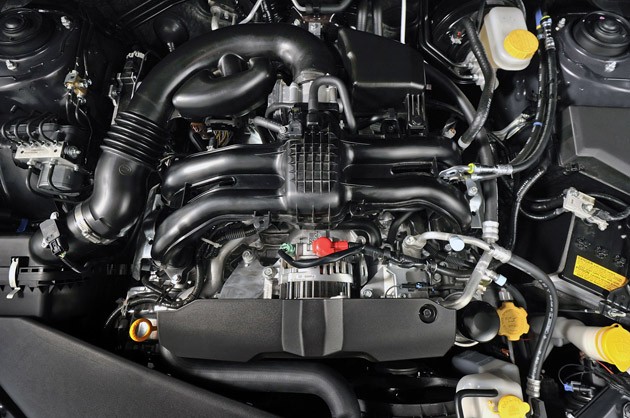Check out what Todd Bianco of ACarIsNotARefrigerator.com has to say about the 2012 Subaru Impreza!
In any constellation, some stars appear brighter than others. In the constellation of Fuji Heavy Industries, Ltd. – one of Japan’s largest industrial companies – its subsidiary, Subaru, is that shining star.
Literally and figuratively, Subaru, which is the Japanese word for the Pleaides – has been a rock star in the depressed auto sales environment spawned by the collapse of the economy in 2008. Over the past few years, Subaru has seen double-digit sales increases and 2011 was its best year ever.
Perhaps it’s Subaru’s legendary reliability or perhaps its just that the company stayed laser-focused on its core “outdoor lifestyle vehicles” for its rabidly-loyal customers. Whatever the reason, there is no argument that Subaru has hit a successful formula that continues to resonate with hard-core enthusiasts as well as more recent members of the Subaru family.
If you know nothing about Subaru, you should know that it has two defining traits. First, it’s the only mass-market auto manufacturer that uses flat boxer engines in all its vehicles. (Porsche uses boxer engines in its sports cars, but not its other products.) And that boxer engine always drives all four wheels to form what Subaru calls symmetrical all-wheel drive.
Here’s an animation of how the Subaru boxer engine and symmetrical all-wheel drive work:
While Subaru is a popular niche brand in the Southland, you really need to drive up to Big Bear, Mammoth or anywhere in the Pacific Northwest to appreciate how many people choose a Subaru over other AWD cars. The first time I went to Jackson Hole, I was amazed by the number of people (full-time residents) who had a big 4-wheel drive pickup or SUV and a Subaru wagon in their driveways.
The Impreza has been Subaru’s humble entry-level car for many years. For 2012, while Honda and Toyota played it safe with subtle evolutions of their core products, Subaru took a quantum leap with the Impreza. The body, while remaining almost identical in size to the outgoing model, received new creased and crisp sheet metal and the interior lost much of the cheap-looking plastics in favor of more tailored, textured and soft-touch materials.

Beneath the handsome new metal (with nicely detailed wheel wells) is Subaru’s new 2.0L boxer engine making a relatively modest 148 hp 145 lb-ft of torque. The new engine sheds half a liter and 22 horsepower, but you’d never know it because its power and torque is managed much more efficiently by the new Lineartronic CVT (continuously variable transmission) that replaces the old-school four-speed automatic. Both a 5-speed manual and the CVT are available, but the CVT is the only transmission offered on the top-line Limited model.

Subaru claims a zero to 60 mpg time of 9.8 seconds, 0.3 seconds faster than the last Impreza that had a more powerful engine. While it’s not glacial, it’s 1/10th of a second slower than a standard Prius. It did seem quick off the line, but it takes a bit more time and effort for the engine to achieve highway speed.
The big news, however, is that fuel economy jumped from a decidedly uncompetitive 20 mpg city, 26 mpg highway to 27 mpg city, 36 mpg highway. That stunning 30% increase instantly makes Subaru competitive with other subcompact cars, even while sporting the heavier AWD hardware not available on any competitor like the Honda Civic or Ford Focus.
The new Impreza has a smaller gas tank (14.5 gallons), but with the boosted fuel economy, it still has a potential cruising range of more than 500 miles.
The base 2012 Impreza 2.0i sedan is $17,495. Additional trim levels are Premium and Limited. Add $500 for the 5-door version and $1,000 for the 5-door Sport. I wanted to test the much more rakish and desirable 5-door Sport Limited model; but those are so popular, dealers can’t keep them in stock.
My gracious host at Subaru Pacific had a loaded Limited sedan (MSRP $24,895) ready for me to test. The standard Lineartronic CVT produces the best fuel economy. The sedan is identical to the 5-door/Sport model from the B-pillar forward, so both should have the same driving characteristics.

First, I’d like to state for the record that I’m not a big fan of CVTs. CVTs are a bit buzzy and the mechanical shifts I like to feel when driving are missing. That said, Subaru’s CVT is pretty advanced and civilized. Humming and complaining was reserved for heavy acceleration. However, in normal stop-and-go city traffic and highway speed cruising, the transmission works well and is unobtrusive.
The Lineartronic’s “M” mode gives the driver the feel and control of a 6-speed automatic. Handsome silver paddle shifters behind the steering wheel engage the fun. The LCD information screen between the analog gauges displays the number corresponding to the “gear” you feel you’re in. Slick stuff, but it’s more of a gimmick than useful. You’ll find yourself just leaving it in Drive and saving the manual mode for a steep decline….
Read the full article on ACarIsNotARefrigerator.com.

2 comments:
I am constantly invstigating online for posts that can benefit me. Thank you!
AutoExec RoadMaster TRUCK Version
It is truly a nice and useful piece of info. I am satisfied that you shared this useful information with us. Please keep us up to date like this. Thanks for sharing.
La Canadienne Women's Felicia Boot
Post a Comment